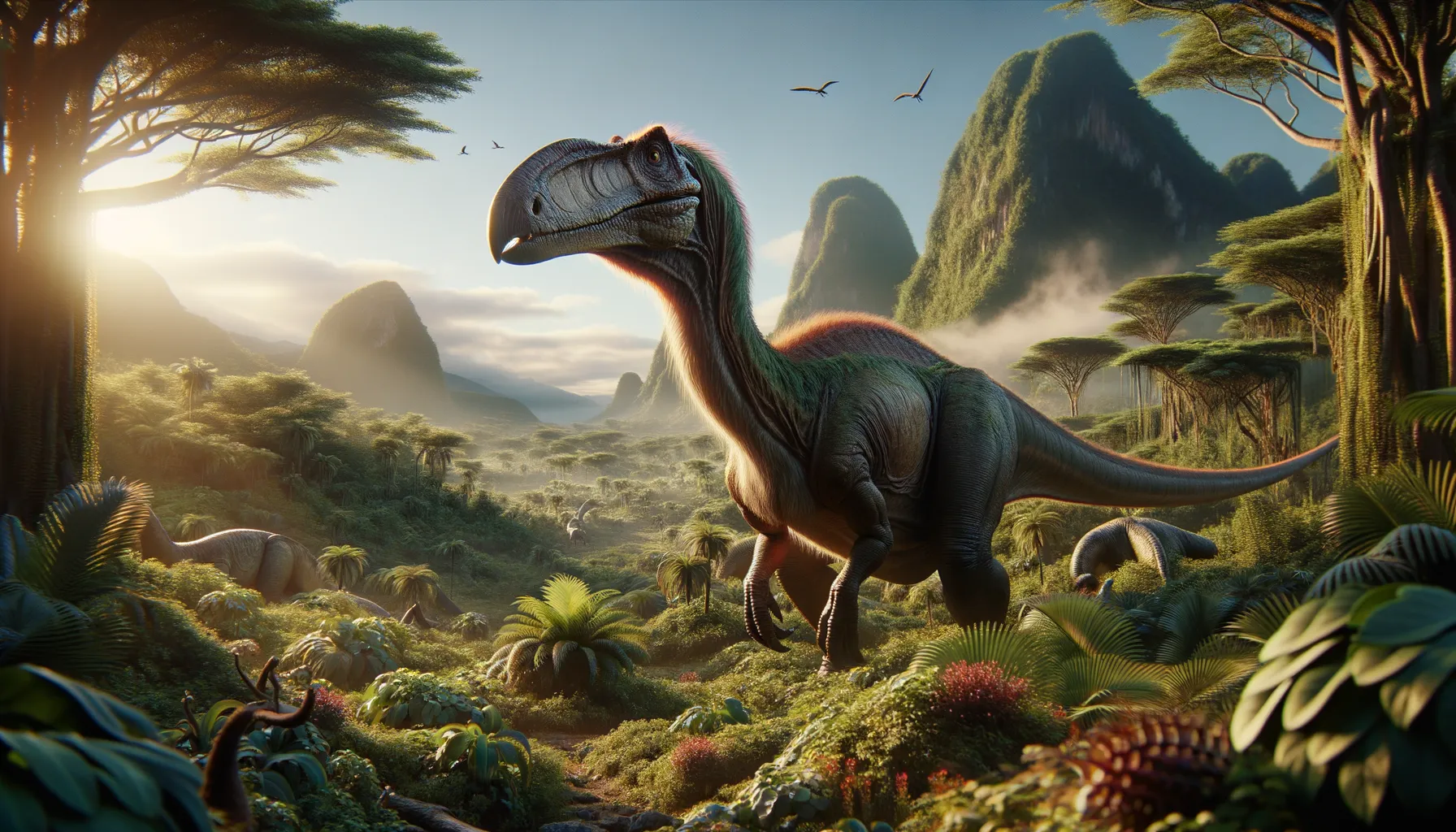
Equijubus
Ancient grazer of the Asian plains.
Period
Cretaceous
Length
Measured around 7 meters in length.
Height
Stood roughly 2 meters tall at the hips.
Weight
Weighed about 700 to 900 kilograms.
Equijubus was a herbivorous dinosaur from the early Late Cretaceous period, discovered in China. It was a part of the hadrosauroid family, known for its beak-like mouth used for grazing on vegetation. This dinosaur plays a significant role in understanding the evolution of hadrosaurs, offering clues about the diversity and adaptation of herbivorous dinosaurs during this era.
Diet
Equijubus primarily fed on plants, using its beak to crop vegetation. It would have likely consumed a variety of leaves, stems, and possibly fruits, playing a crucial role in its ecosystem as a herbivore.
Hunting
Being a herbivore, Equijubus did not engage in hunting. Instead, it spent much of its time grazing and finding ample sources of vegetation to sustain itself.
Environmental challenges
During the Cretaceous period, environmental challenges for Equijubus included climate fluctuations and potential competition for food resources. Its large size helped with defense against predators, but it relied on abundant vegetation. Changes in flora due to climatic shifts might have affected its food supply, adding pressure to adapt or migrate.
Speed
Likely a slow mover compared to predators.
Lifespan
Estimated around 30 years in the wild.
First discovery
Discovered in 2003 in the Gansu Province, China.
Fun Facts
- Equijubus was a plant-eating dinosaur that lived around 112 million years ago during the Early Cretaceous period.
- The name Equijubus means 'horse mane', a nod to its long neck that might have resembled the mane of a horse.
- Equijubus is known from fossils found in what is now China, giving us insights into prehistoric life in Asia.
- This dinosaur was a type of hadrosaur, or 'duck-billed dinosaur', although it didn't have the characteristic wide snout.
- Equijubus possibly used its beak-like mouth to munch on low-lying plants, aiding its survival in its ecosystem.
- The discovery of Equijubus in 2003 provided important clues about the diversity and evolution of early hadrosaurs.
- Despite its name meaning 'horse mane', Equijubus had no direct relation to horses; its features were purely coincidental.
Growth and Development
Equijubus, like many dinosaurs, underwent rapid growth after hatching to reach a size that offered protection from predators. Its development included dietary specialization to efficiently process plant material. Growth rings in bones suggest seasonal patterns, indicating possible growth spurts during periods of abundant food resources.
Habitat
Equijubus inhabited areas with lush vegetation, suitable for its grazing lifestyle. It likely thrived in floodplain environments with rivers and forests, providing ample food and water sources. Such habitats would support a high diversity of flora and fauna, contributing to a rich ecological community.
Interaction with other species
Equijubus coexisted with various dinosaur species, including potential predators and other herbivores. Its size provided some defense against predators like theropods. Interaction with other herbivores involved competition for food resources, possibly leading to niche differentiation in feeding strategies.
Natural lifespan
In the wild, it is believed to have lived around 30 years.
Reproduction
Reproduction for Equijubus likely involved laying eggs in nests, a common trait among herbivorous dinosaurs. Parental care might have been necessary to protect the eggs and hatchlings from predators. Fossilized nests with eggs suggest communal nesting sites, possibly indicating social behaviors during the breeding season.
Social behaviour
Equijubus may have exhibited social behavior, potentially living in herds for protection. Group living would have provided safety in numbers and increased the ability to spot predators. Communication within the group could have involved vocalizations or visual signals, aiding in coordination and alert systems.
Fossil locations
Fossils of Equijubus have been primarily found in the Gansu Province of China. The area provided a window into the ecosystem of the early Late Cretaceous. These fossils have helped paleontologists understand the diversity and evolution of hadrosauroids in this region.
